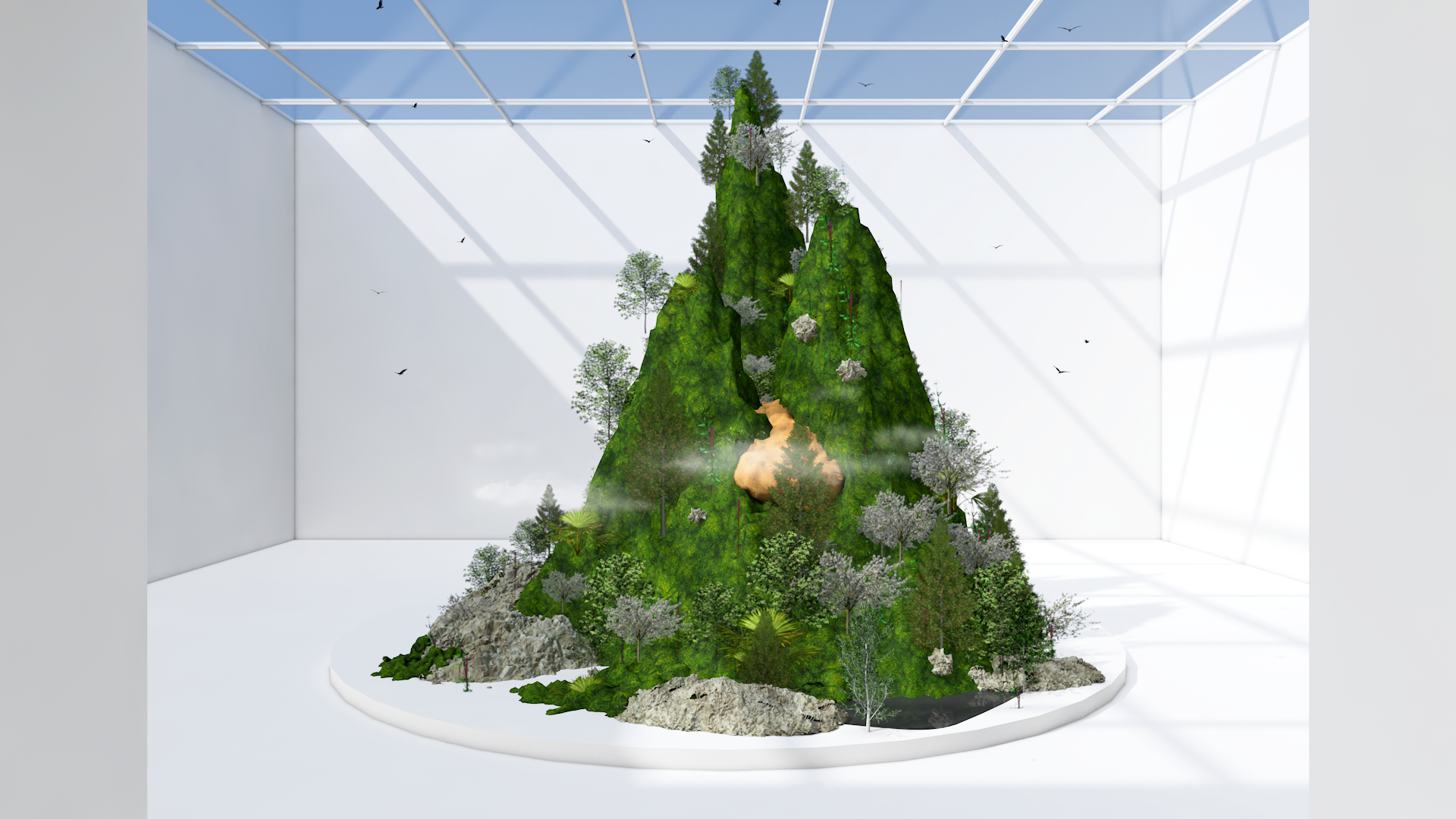NaturingA Perfect Nature Object
A Perfect Nature Object
Designed as part of a design duo with Gabriel Beard
Naturing challenges the artificial distinction between ‘man-made’ and ‘nature’, an etymological dichotomy that continues to inform approaches to sustainability and environmentalism. The creation of a ‘perfect nature’ object, that can exist only within the virtual gallery context, demonstrates the contradictory pursuit of seemingly un-touched natural environments. It examines how the commodification and objectification of natural imagery leads to tokenistic, green washing projects. However it also recognises humans’ agency: through calling for a redefinition from noun to verb, Naturing empowers us to reconsider what it means to make ‘natural’ environments - how can they be less optically focussed, more beneficial to wider species, better in reducing green house gases and pollutants from our atmosphere?




This is the first mode of experiencing the installation, the second is through entering the virtual sculpture - situating the visitor within the installation, where they are able to roam and explore the landscape. From this vantage, the construction reveals itself; the image of the perfect nature is shown to be a human artifice. Objects from a history of humans creating versions of nature scatter the landscape; elements from the picturesque, green washing, farming and re-wilding. The 'perfect nature’ is animated - plants blow in the simulated wind, animals wander and fly around. However this animation is on loop, glitches between the loop cycles reveal it as a fiction; the perfect nature can only exist as a virtual construction.
‘Naturing’ questions what we consider as the built environment. Within the Anthropocene, humans have re-shaped all aspects of Earth through both direct and indirect means. In this sense, the Earth is entirely a built environment and, nature - often considered that which is untouched by humans - no longer exists. However, our artificial distinction between ‘man-made’ and ‘nature’ remains, with the image of nature often informing approaches to sustainability and environmentalism. Humans construct environments that paradoxically give the impression of perfect, untouched nature. The preoccupation with this imagery can lead to tokenistic, green-washing projects.
Reframing ‘nature’ to ‘naturing’ recognises the human hand involved in creating ‘natural’ environments. The installation ‘Naturing’ demonstrates the contradictory pursuit of seemingly un-touched natural environments, examining the commodification and objectification of natural imagery. However it also recognises humans’ agency: through calling for a redefinition from noun to verb, naturing empowers us to reconsider what it means to make ‘natural’ environments - how can they be less optically focussed, more beneficial to wider species, better in reducing green house gases and pollutants from our atmosphere?